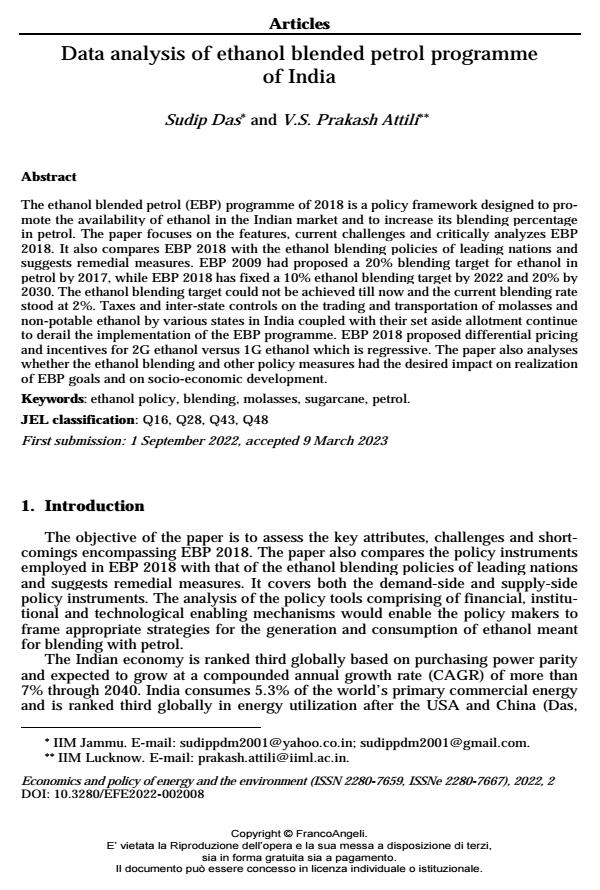Data analysis of ethanol blended petrol programme of India
Journal title ECONOMICS AND POLICY OF ENERGY AND THE ENVIRONMENT
Author/s Sudip Das, V.S. Prakash Attili
Publishing Year 2023 Issue 2022/2
Language English Pages 21 P. 171-191 File size 301 KB
DOI 10.3280/EFE2022-002008
DOI is like a bar code for intellectual property: to have more infomation
click here
Below, you can see the article first page
If you want to buy this article in PDF format, you can do it, following the instructions to buy download credits

FrancoAngeli is member of Publishers International Linking Association, Inc (PILA), a not-for-profit association which run the CrossRef service enabling links to and from online scholarly content.
The ethanol blended petrol (EBP) programme of 2018 is a policy framework designed to pro- mote the availability of ethanol in the Indian market and to increase its blending percentage in petrol. The paper focuses on the features, current challenges and critically analyzes EBP 2018. It also compares EBP 2018 with the ethanol blending policies of leading nations and suggests remedial measures. EBP 2009 had proposed a 20% blending target for ethanol in petrol by 2017, while EBP 2018 has fixed a 10% ethanol blending target by 2022 and 20% by 2030. The ethanol blending target could not be achieved till now and the current blending rate stood at 2%. Taxes and inter-state controls on the trading and transportation of molasses and non-potable ethanol by various states in India coupled with their set aside allotment continue to derail the implementation of the EBP programme. EBP 2018 proposed differential pricing and incentives for 2G ethanol versus 1G ethanol which is regressive. The paper also analyses whether the ethanol blending and other policy measures had the desired impact on realization of EBP goals and on socio-economic development.
Keywords: ethanol policy, blending, molasses, sugarcane, petrol.
Jel codes: Q16, Q28, Q43, Q48
Sudip Das, V.S. Prakash Attili, Data analysis of ethanol blended petrol programme of India in "ECONOMICS AND POLICY OF ENERGY AND THE ENVIRONMENT" 2/2022, pp 171-191, DOI: 10.3280/EFE2022-002008